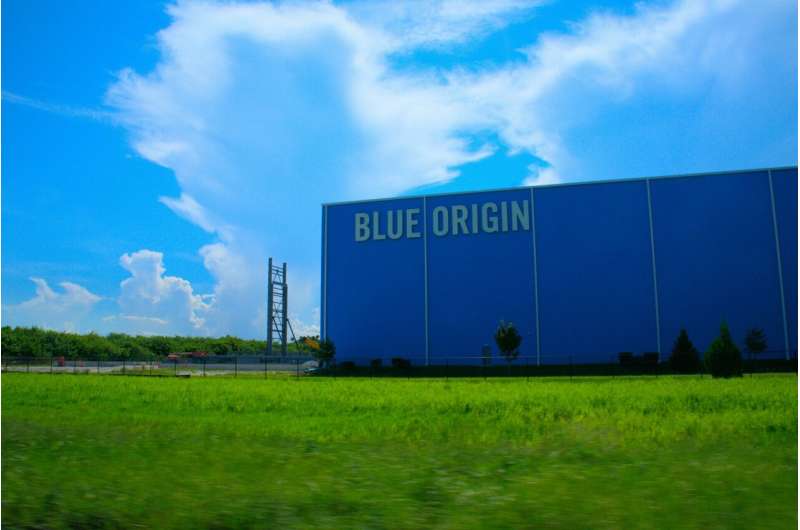
Image credit: Unsplash/CC0 Public Domain
While the first launch of Blue Origin’s giant New Glenn rocket is scheduled for before the end of the year, Jeff Bezos’ company began testing its recovery operations on August 8 using the giant crane parked at Port Canaveral.
“Viewers at Port Canaveral got a glimpse of our recovery operations today as we demonstrated the process of converting New Glenn’s first stage from vertical to horizontal in our 200-foot-tall simulator,” the company posted on X. “The operation validated our tools and procedures for recovering our first stage from the landing craft and brings us another step closer to our first launch.”
The 375-foot-tall crane arrived at the port from Germany last October and will be used when New Glenn’s launch vehicle returns to port on its “sea-based landing platform,” similar to how SpaceX lands its Falcon 9 boosters on drone ships.
Because it’s a larger rocket, Blue Origin needed a larger crane. It’s also the highest point at Port Canaveral and is right next to SpaceX’s recovery operations, which use mobile cranes owned and operated by the nearby port. Blue Origin operates its own crane.
New Glenn launches will take place from Launch Complex 36 on the nearby Cape Canaveral Space Station, and preparations are already underway to enable the first launch before the end of the year.
Blue Origin CEO Dave Limp said a full recovery rehearsal with the lander will take place soon.
The height of the New Glenn first stage boosters will be 189 feet, while the SpaceX boosters will be about 135 feet tall.
At launch, the entire New Glenn rocket will reach an altitude of 322 feet, with seven Blue Origin BE-4 engines providing nearly 3.9 million pounds of thrust at liftoff.
Blue Origin switched its engine production to New Glenn this summer after delivering enough BE-4 engines to its customer United Launch Alliance to support the remaining Vulcan Centaur launches that ULA has on its slate for 2024. Vulcan rockets use only two BE-4 engines.
When the rocket finally flies and makes it through the landing, it is designed for at least 25 relaunches.
The first mission could be to fly two Mars satellites for NASA as part of its Escape and Plasma Acceleration and Dynamics Explorers (ESCAPADE) mission. The satellites have been built by Rocket Lab for UC Berkeley over the past three years and will measure plasma and magnetic fields around Mars.
NASA also relies on New Glenn to launch Blue Origin’s Blue Moon lunar module to the Moon and support future Artemis missions.
And Blue Origin also has an extensive list of commercial customers, including several flights for Bezos’ Amazon and its Project Kuiper satellites.
Construction of the rockets continues at Blue Origin’s factory next to the Kennedy Space Center visitor complex on Merritt Island.
The company has facilities at Cape Canaveral large enough to handle three New Glenn rockets simultaneously. Blue Origin took over the lease for LC-36 in 2015 and invested around a billion dollars in the launch pad alone. It was already used for government launches from 1962 to 2005, including the Surveyor 1 lunar module in 1967 and some of the Mariner probes.
When the launches finally take place, the booster’s first stage will land on a landing pad about 620 miles down in the Atlantic Ocean and then make its way back to Port of Canaveral, where Blue Origin’s new crane will wait to restart the launch process.
2024 Orlando Sentinel. Distributed by Tribune Content Agency, LLC.
Quote: Blue Origin tests recovery crane for New Glenn rocket at Port Canaveral (August 10, 2024), accessed August 10, 2024 from https://phys.org/news/2024-08-blue-glenn-rocket-recovery-crane.html
This document is subject to copyright. Except for the purposes of private study or research, no part of it may be reproduced without written permission. The contents are for information purposes only.

